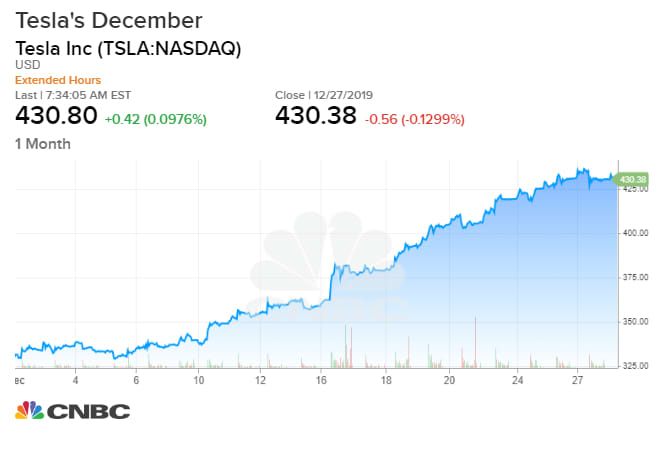The Setting Every Community Up for Retirement Enhancement Act of 2019, called the “SECURE Act” makes significant changes to how IRAs and certain retirement benefits must be treated post-death. We reviewed many of the changes and planning implications of this new law on your IRA and retirement benefits in “SECURE Act New IRA Rules: Change Your Estate Plan,” Dec 25, 2019. This article will expand on those discussions and explore additional rules, implications and planning ideas.
Killing the Stretch
The heart of the SECURE Act is the mandated payout of many plans in about 10 years after the plan owner dies. Estimates are that this might raise almost $16 Billion for the Treasury.
10-Year Rule – Plan Pay Out After 10-Years
If the beneficiary of the plan is an individual, then the entire plan balance will have to be paid out by the 10th anniversary of the plan holder’s death. Many taxpayers relied on the assumption that the valuable income tax deferral and tax free growth inside the plan would dissuade an otherwise imprudent beneficiary from taking the plan balance faster then the long-term or “stretched” payout period, even if no trust were used. But with the loss of that motivating tax benefit in after 10-years, that may not be the case.
Given the horror stories and statistics on how fast many heirs burn through an inheritance, IRA or otherwise, that assumption that a valuable tax benefit would dissuade an heir from taking more than the minimum payment required to be made out of an inherited IRA may not have been reliable in many cases. Perhaps that is the reason that has given rise to so many taxpayers with larger balances relying instead on naming trusts as beneficiaries of their IRAs, rather than the intended heir directly.
If the beneficiary of the conduit trust does not qualify as an eligible designated beneficiary (“EDB”), then the entire plan balance will have to be paid out by the 10th anniversary of the plan holder’s death. That limits the deferral and protection to about 10 years for many plan beneficiaries even if a protective trust is used.
Some commentators have suggested that the plan balance will have to be distributed by the end of the calendar year (December 31) which year includes the 10th anniversary of the plan holder’s death. Thus, the post-SECURE Act “stretch” can be longer than 10 years.
10-Year Rule – Income Tax Considerations
The long life expectancy payout under prior law often resulted in small and manageable income tax consequences since the annual payment may not have pushed the receiving beneficiary into a higher income tax bracket. Post-Secure Act a large lump sum payment of an entire plan balance to a trust, could expose those dollars to a much higher marginal tax rate significantly increasing the tax burden. Further, if there is a change in administration in Washington and Democratic proposals to increase the marginal tax rates are enacted, that burden could be magnified.
Might Roth conversions provide an offset to the new 10-year rule? Perhaps. Since there is no income tax consequence to a payment of a Roth IRA in a lump sum in year-10 the income tax bite of the 10-year rule might seem to be mollified. However, does that suggest that a plan holder convert a regular IRA to a Roth IRA today to achieve that benefit? Perhaps not. If a plan holder has a large IRA and converts it to a Roth IRA today, there will be a current income tax cost incurred now. A large conversion today might push the plan holder into similarly high income tax brackets that the 10-year rule might push a trust into in the future. Perhaps there may be a benefit to staging Roth conversions over several years to avoid the highest income tax brackets on a conversion. However, if the plan holder attributes a meaningful probability to a change in administrations to Democrat, and an increase in marginal income tax rates, converting before that occurs may prove the more prudent tax minimization step.
10-Year Rule – Beneficiary Imprudence, Divorce and Creditors
The SECURE Act requirement that a plan balance has to be paid out in approximately 10-years from the plan holder’s death has a second potentially negative consequences. It can result in a beneficiary receiving a large lump sum payment thereby exposing that payment to the beneficiaries financial irresponsibility, contrary to what the plan holder wanted.
This 10-year payout rule will cause many plan holders to revisit their planning since that deferral is much shorter then what was anticipated by the plan holder when that trust was created. That result could put a large IRA balance in the hands of an imprudent beneficiary much sooner than was anticipated. This is the precise worry that many articles have cautioned plan holders about since it could undermine their goals for the plan.
Certainly trust could be used to hold the plan assets after the plan has to payout after 10-years. While the economic value will be diminished by an income tax cost in that year, and further tax deferred growth will be lost after that point, the trust could still serve to do what trusts are designed to do: protect the beneficiary from the beneficiaries own fiscal imprudence.
The use of a trust, even with the reduced economic advantages in the wake of the SECURE Act may also serve to keep the assets character as a separate inherited asset intact which may be valuable if the beneficiary later divorces. A risk of the 10-year rule for not trusteed plan assets is that once distributed the former plan assets might face a greater likelihood of being commingled with marital assets and thereby lose their protected status if the heir later divorces.
A more nuanced analysis of the impact of the SECURE Act’s 10-year rule is necessary. If the named beneficiary falls into one of the five categories of EDBs (see discussion under the “Exceptions” below) they will continue to qualify for a life expectancy payout for their lifetime. Thus, for these categories of beneficiaries the existing estate/retirement/trust plan may still work largely as anticipated and the SECURE Act may have limited impact. Thus, as is so often the case with new tax laws, each taxpayer’s plan has to be reviewed in light of that taxpayer’s personal circumstances. Generalizations can be misleading.
Exceptions from the 10-Year Rule – Additional Thoughts
There are five categories of beneficiaries who can continue to withdraw inherited IRAs over their life expectancy instead of the likely much shorter 10 years mandated under the SECURE Act. The exceptions are for a surviving spouse, chronically ill, disable, minor child, or person 10-years or less younger then the plan holder. These folks are called “eligible designated beneficiaries,” or” EDB (because everyone needs another tax acronym). A conduit trust for one of these beneficiaries will generally qualify for the longer life expectancy payout under the SECURE Act.
Also, when the surviving spouse, chronically ill beneficiary or disabled beneficiary, or 10-year or less younger beneficiary, dies, and another beneficiary inherits, or when the minor beneficiary reaches the age of majority, the new SECURE Act 10-year rule will apply. So if a surviving spouse is an EDB of a conduit trust, on that spouse’s death any remaining plan balance will have to be fully distributed by the 10th anniversary of that spouse’s death.
Each of these EDBs will be examined in more detail then the prior article.
EDB – 1:- Surviving Spouse
A surviving spouse can rollover the IRA just as under prior law. The SECURE Act does not change that. If a conduit trust is used to hold the plan balance that can be withdrawn over life expectancy. The distributions under pre-SECURE Act law had to have begun in the year the deceased spouse would have attained age 70 ½ now it’s the year the deceased spouse would have attained age 72 since the SECURE Act deferred the time to begin Required Minimum Distributions (“RMDs”).
EDB - 2: Disabled Beneficiary
A disabled heir is defined in Code Section 72(m)(7): “For purposes of this section, an individual shall be considered to be disabled if he is unable to engage in any substantial gainful activity by reason of any medically determinable physical or mental impairment which can be expected to result in death or to be of long-continued and indefinite duration. An individual shall not be considered to be disabled unless he furnishes proof of the existence thereof in such form and manner as the Secretary may require.” This definition is quite limited. An heir that a plan holder wants to benefit may have substantial health challenge and have limited earning capacity because of it. However, if the heir can engage in “any substantial gainful activity” even if very limited, that heir will not qualify for this benefit. Thus, the terminology in the definition alone will restrict the applicability of this provision.
EDB – 3: Chronically Ill Beneficiary
A chronically ill heir is defined in Code Section 7702B(c)(2) with certain modifications. This Code Section provides: “(A) In General - The term “chronically ill individual” means any individual who has been certified by a licensed health care practitioner as— (i) being unable to perform (without substantial assistance from another individual) at least 2 activities of daily living for a period of at least 90 days due to a loss of functional capacity, (ii) having a level of disability similar (as determined under regulations prescribed by the Secretary (in consultation with the Secretary of Health and Human Services) to the level of disability described in clause (i), or (iii) requiring substantial supervision to protect such individual from threats to health and safety due to severe cognitive impairment. Such term shall not include any individual otherwise meeting the requirements of the preceding sentence unless within the preceding 12-month period a licensed health care practitioner has certified that such individual meets such requirements. (B) Activities of daily living For purposes of subparagraph (A), each of the following is an activity of daily living: (i)Eating. (ii) Toileting. (iii) Transferring. (iv) Bathing. (v) Dressing. (vi) Continence.”
The above definition suffers from the same overly restrictive terms as the definition of “disabled” above. Many intended heirs are living with challenges that may limit or even prevent gainful employment but they are no so severely incapacitated as to meet the requirements of chronically ill according to the above definition. Yet, these same people who need the protections of a trust, and who may desperately need the economic benefits from the plan assets to be bequeathed, will be forced to have the plan balance distributed in 10-years and lose the continued tax deferred growth, etc.
Any plan holder planning on an heir meeting the requirements of being “disabled” or “chronically ill” to qualify as an EDB under the SECURE Act should carefully evaluate the stringent requirements involved.
EDBs - Additional Rules for Chronically Ill or Disabled Beneficiaries
There is additional leniency permitted to chronically ill or disabled beneficiaries.
A trust can be created for their benefit that has multiple beneficiaries. If on the death of the plan holder that trust is divided into separate trusts for each beneficiary, the post-division trust for the chronically ill or disabled beneficiary will qualify as an EDB for life expectancy payout treatment. Without this change each of those separate trusts for each beneficiary would have to have separately been indicated to be a beneficiary.
Also, in contrast to a spouse or minor child who require a conduit trust to qualify for the special life expectancy payouts as EDBs, a chronically ill or disabled heir can be the beneficiary of an accumulation trust as well. Even though the accumulation trust may name beneficiaries on the death of the chronically ill or disabled beneficiary the chronically ill or disabled beneficiary will be permitted to withdraw pursuant to the life expectancy rules rather than the 10-year payout.
EDB – 4: Minor Children
Minor children are also considered eligible beneficiaries so that the 10-year payout will not apply to them. The SECURE Act specifically limits this to a child of the IRA plan holder. It is not applicable to any minor beneficiary. Act Section 401(a)(2)(E)(ii)(II): “…subject to clause (iii) [for disabled EDBs], a child of the employee who has not reached majority…”
The age of majority, i.e. when the child is no longer a minor, would seem to be 18 or 21 depending on state law, but some have suggested that other rules might apply to lengthen that period. And that remains the rub of the SECURE Act, many parents will not wish to have a child receive their plan balance in full by age 28 or 31. But even a greater concern with the explosion of alternative family arrangements and relationships (the “modern” family) is that many plan holders will bequeath IRA assets to young beneficiaries who are not “children” as restricted by the SECURE Act so that those young beneficiaries will not qualify as EDBs (i.e. a conduit trust that was created for them will not qualify for life expectancy payout) and they will have to receive the full distribution of the plan balance by the 10-year SECURE Act date regardless of age.
EDB – 5: Beneficiary Not More than 10-Years Younger
A beneficiary who is not more than 10-years younger than the plan holder. This will permit a life expectancy payout for the named beneficiary but the application of this EDB exception is likely quite limited. The plan holder would have to name a friend or family member that is only 10 years younger, which certainly will exclude children and other typically named beneficiaries. Example: Plan holder is age 80 and has an unmarried partner (so the spouse EDB exception will not apply) who is age 70 who if named will qualify as an EDB under this exception and be permitted to withdraw the plan balance over life expectancy. However,
Planning For Young Beneficiaries
The problem illustrated above for minor children who might inherit an IRA is obvious. Too much money might have to be distributed to the beneficiary at age 28, or earlier if the minor is not a child of the plan holder. Many plan holders (parents, or other benefactors) will not want that result.
So the answer for some plan holders will be to revise their estate planning documents and substitute an accumulation trust in place of the conduit trust. But the result will be that after the 10th year the entire IRA plan balance will have to be distributed to the trust bunching that income into a single high trust tax year. Since trusts face compressed income tax brackets much of that income may be pushed into the highest tax bracket.
One partial solution might be to take distributions during the 10 year period (not defer them all until the 10th year) to spread out the income tax into hopefully lower tax years.
Another approach might be to coordinate life insurance with the tax that is estimated to be due. A simple Irrevocable Life Insurance Trust (“ILIT”) might be set up to hold life insurance on the plan holder that would be collected on the plan holder’s death and be held in that ILIT to pay the income tax due on the 10th year anniversary when the distribution of the plan balance is required. That same ILIT might be used to fund estate tax costs on the plan if the Democrats win in 2020 or 2024, etc. and lower the estate tax exemption substantially. But creating both an accumulation trust and an ILIT, and funding an insurance plan, is complex and costly and not a solution some plan holders will accept.
Another approach might be to use plan assets to benefit different beneficiaries in light of the SECURE Act changes and make other bequests to the intended minor beneficiary.
Example: Taxpayer had $1 million in her estate and $1 million in her IRA. She is single and has a child age 35 from a prior marriage. Her second and most recent spouse had a child who is now age 5 who was never adopted by her, so that minor will not qualify as her child and hence will not qualify as an EDB under the act. Under pre-SECURE Act law she named the minor as sole beneficiary of a conduit trust to get a long stretch on the IRA payment. She named her adult child as beneficiary under her estate for an equivalent amount. Post-SECURE Act perhaps flipping her estate plan might suit her goals. The 35 year old adult child can be named as beneficiary of her IRA as a payout in year 10 might not be as concerning. The minor can be named as beneficiary under her will so that those assets can be held in a longer term trust without the issues that a 10-year payout to an accumulation trust might trigger. This plan is also subject to various issues. For example, how should the tax effect of the change in dispositive scheme be factored into the planned distributions.
Pre-SECURE Act Rules Continue to Apply
Under prior law, if the IRA plan holder named a beneficiary who qualified as a “designated beneficiary” that beneficiary could withdraw the plan balance in annual increments over their life expectancy. If a trust was named as the beneficiary the life expectancy of the oldest beneficiary of that trust could be used to determine withdrawals, if the trust met the requirements of being a conduit or so-called “see-through” trust. If the named trust did not qualify as a conduit or see-through trust then the rules in the following paragraph would have applied.
If the beneficiary did not meet the requirements of a designated beneficiary, e.g. a non-conduit trust or the estate of the plan holder, then the funds had to be distributed over a mere 5 years if the plan holder died before their required beginning date (“RBD”). If the plan holder died after their RBD, then over the plan holder’s life expectancy (which would generally be much shorter then the beneficiary’s life expectancy had the beneficiary been a “designated beneficiary.”). These rules continue to apply post-SECURE Act.
Since the SECURE Act rules apply to IRAs inherited after 2019, it would seem that beneficiaries of those plan holders who died before 2020, would be exempt from the new 10 year real. Well, kinda but not entirely because if the beneficiary dies the 10-year rule will then apply.
Conduit Trusts Post-SECURE ACT
A common trust used as a receptacle for plan benefits is the so-conduit trust. This trust requires that the trustee distribute IRA distributions the trust receives to the trust beneficiary right away. Prior to the SECURE Act (and for EDBs under the SECURE Act) the plan payout over life expectancy often resulted in a modest payment through the conduit trust to the beneficiary each year.
Following is an excerpt from a conduit trust provision based on language used by Interactive Legal: “Conduit Trust Provisions…with respect to the Grantor's interest in any Retirement Benefits which are payable (either directly or by reason of the provisions above) to the Trustee thereof: 1. Each year, beginning with the year of the Grantor's death, the Trustee of such trust shall withdraw from any such Retirement Plan the Minimum Required Distribution for such Retirement Plan payable to such trust for such year, plus such additional amount or amounts as the Trustee (excluding, however, any Interested Trustee) deems advisable in the Trustee's sole discretion. All amounts so withdrawn (net of expenses) shall be distributed to the Beneficiary… free of trust... 2. The following definitions shall apply in administering these provisions relating to such trust. The Minimum Required Distribution for any year shall be, for each Retirement Plan: (a) the value of the Retirement Plan determined as of the preceding year end, divided by (b) the Applicable Distribution Period; or such greater amount (if any) as the Trustee shall be required to withdraw under the laws then applicable to such Retirement Plan to avoid penalty.”
The above illustrative provision suggests that when the 10-year SECURE Act distribution requirement applies, the trustee of a conduit trust will receive the distribution of the IRA balance and then distribute it out to the conduit trust beneficiary. This outright distribution will be a concern for many plan holders.
Trust Drafting Considerations
Given that the SECURE Act is so new, commentators will refine planning recommendations over time, and there is so much uncertainty in the tax system, plan holders revising estate planning documents (e.g. a revocable trust that includes conduit trust provisions for plan assets) might consider including in the revised trust a trust director (also called a trust protector). This person is often granted specified powers in the instrument to provide for flexibility, e.g. to change the situs and governing law of the trust. The same trust protector might also be given powers to modify the terms of any trust indicated to receive IRA assets. In some instances it appears that it may be beneficial to convert a conduit trust into an accumulation trust to provide protection after the 10th year. Perhaps the protector can be given the express power to transform a conduit trust into an accumulation trust and vice versa. In that way, if circumstances change or the preferable planning approach becomes clear, the trust protector may exercise the express authority to change these trusts. Example: Plan holder has a revocable trust that includes a conduit trust for a named beneficiary. The idea was that the beneficiary would be able to benefit from a long stretch of the payout of the IRA when the plan holder dies, and the conduit trust would provide for protection of the beneficiary from claimants or divorce as well. After the SECURE Act the plan holder feels that the protection of an accumulation trust may be more useful. The simple approach might be to revise the revocable trust and substitute an accumulation trust provision for the conduit trust provision. But what if the beneficiary is later disabled or subject to a chronic illness. In that case having a conduit trust which would benefit from the life expectancy payout as the beneficiary would be and EDB might be preferable. Incorporating the flexibility into the trust instrument may permit that type of change. If this type of provision is included consider whether the trust protector is designed in the trust as acting in a fiduciary capacity, or whether state law requires that characterization. If so, it may be preferable to designate another person to hold these powers who expressly is not acting in a fiduciary capacity in order to facilitate that power holder to make those changes.
Conclusion
The SECURE Act includes a number of other provisions that are relevant to estate and related planning. The SECURE Act provisions discussed above are complex and many nuances and interpretations are still being considered. So proceed with caution, but do proceed because many estate plans, trusts and beneficiary designations will require rethinking and revision.
Let's block ads! (Why?)
https://news.google.com/__i/rss/rd/articles/CBMiamh0dHBzOi8vd3d3LmZvcmJlcy5jb20vc2l0ZXMvbWFydGluc2hlbmttYW4vMjAyMC8xMi8yOS9zZWN1cmUtYWN0LW1vcmUtcGxhbm5pbmctaWRlYXMtZm9yLXlvdS10by1jb25zaWRlci_SAW5odHRwczovL3d3dy5mb3JiZXMuY29tL3NpdGVzL21hcnRpbnNoZW5rbWFuLzIwMjAvMTIvMjkvc2VjdXJlLWFjdC1tb3JlLXBsYW5uaW5nLWlkZWFzLWZvci15b3UtdG8tY29uc2lkZXIvYW1wLw?oc=5
2019-12-29 18:40:24Z
52780518904052












